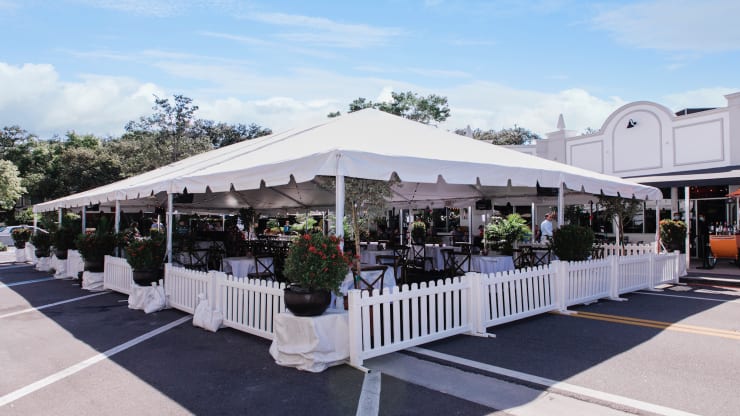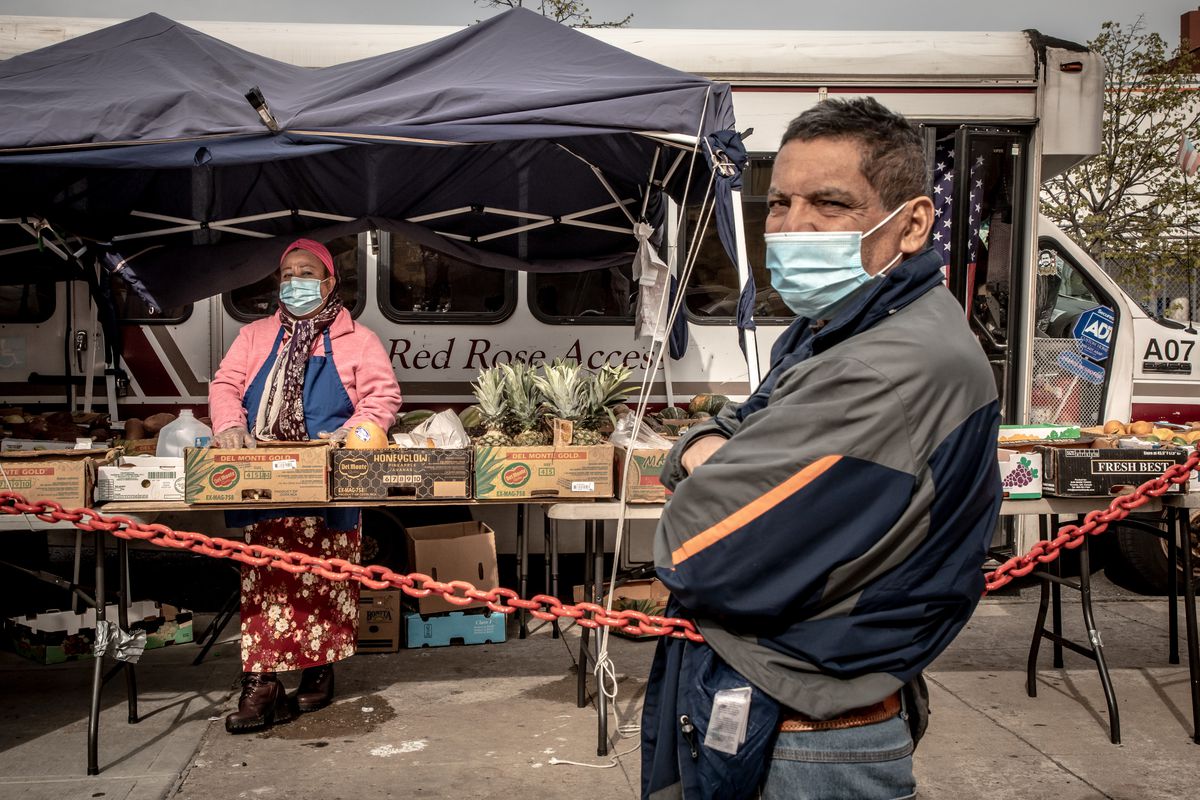
Share On Social!
Cities are increasingly recognizing the value of streets as car-less public space.
For example, due to a spike in demand for outdoor space early in the coronavirus pandemic, cities around the world began closing streets to vehicles to give people walking and biking more space.
More recently, cities are closing streets to vehicles to give restaurants and shops space to serve customers outdoors—in parking spaces, on sidewalks, and on streets.
However, street vendors, many of whom are Latinos and immigrants with no paid sick leave and a history of fighting to serve these very spaces, are being left out of reopening plans.
“They’ve been so exposed through the nature of their work and the cruelty of our society that has forced them out of the formal economy,” Megan Macareg of Many Languages One Voice, an advocacy organization that works with street vendors, told DCist. “They’re some of the most vulnerable workers you could possibly find.”
The “Al Fresco” Movement
To encourage economic recovery and social distancing, cities are using streets in new ways.
Like the “al fresco” or “open-air restaurant” movement.
This is when cities close streets to vehicles to provide more outdoor dining. They block or restrict vehicle travel and ease regulations to make it easier for restaurants and shops to extend their patios/terraces or set-up temporary tents.
After all, in a time of physical distancing, many businesses can’t survive 50% capacity. To serve more customers, businesses need more space.

Extending street and sidewalk dining gives restaurants and shops more space to serve more people while practicing physical distance requirements.
Unfortunately, in many cities, street vendors are left out.
Street Vendors Are Important Part of Economy in Many Cities
Street vendors complement the products and services of brick-and-mortar businesses, and represent the diversity of local communities, said Mohamed Attia, Director of The Street Vendor Project.
“Single mothers selling tamales in Latin American neighborhoods, military veterans selling souvenirs in touristic areas, and immigrant families running food carts and trucks all around the city, cooking and selling the best cuisines to everyday customers and passersby,” Attia said.
In Los Angeles, street vending is a $504 million industry, according to a 2015 report from the Economic Roundtable. Most of the 50,000 street vendors in Los Angeles are women, according to according to the Los Angeles Street vendors Campaign (LASVC).In New York City, street vendors support nearly 18,000 jobs and contribute $293 million to the city’s economy, according to a 2015 report from the Institute for Justice.
Street Vendors Left Out
Street vendors—often immigrant-owned businesses—have long struggled with an unjust regulatory system, from burdensome restrictions and permitting requirements to fines and harassment.
For example, some cities have caps on vending permits and licenses, preventing hard-working entrepreneurs from earning a living.
“The arbitrary caps on vending permits keep thousands of entrepreneurs out of work and discourage current licensed vendors from trying to expand their business,” said Christina Walsh, director of activism and coalitions at the Institute for Justice.
During COVID-19 shutdowns, street vendors fell into a grey area, similar to farmers markets. Many were shut down.
“Because they work in the informal economy, [street vendors] do not qualify for unemployment benefits, making them particularly vulnerable during the current crisis,” according to the DCist.

Additionally, many street vendors were left out of local and federal relief packages.
For example, only brick-and-mortar businesses could benefit from legislation waiving sidewalk-licensing fees during COVID-19.
“Unless [New York City] explicitly includes street vendors in all plans, the unequal history of enforcement of our public streets will continue, and vendors, who come from communities that have suffered disproportionately during the pandemic, will remain excluded from recovery efforts,” according the Street Vendor Project.
In Los Angeles, a nonprofit set up a GoFundMe page to provide emergency funding to the street vendors who were denied economic relief.
Thanks to Rudy Espinoza, the emergency fund has helped hundreds of street vendors, domestic workers, and other vulnerable populations with a $400 cash card.
But there are 50,000 street vendors in the city.
“If advocates are pushing cities to give restaurants free roadway space without making a concerted effort to welcome vendors back to those same sidewalks—and, perhaps, return what they paid in permitting fees—they are discriminating against the city’s most vital and vulnerable small businesses,” wrote Alissa Walker in Curbed.
Reopening Plans Should Include Street Vendors
To better support street vendors right now, cities should eliminate caps on vending permits, waive licensing fees, and ensure street vendors are part of the “al fresco” movement.
As cities consider reallocating street space to make it easier for brick-and-mortar restaurants and shops to extend outdoor service, they need to explicitly include street vendors.
“What’s happening today will be written tomorrow in history,” Attia said. “History will remember that millions of immigrants who had been feeding America, couldn’t feed themselves.”
By The Numbers
1
Supermarket
for every Latino neighborhood, compared to 3 for every non-Latino neighborhood



